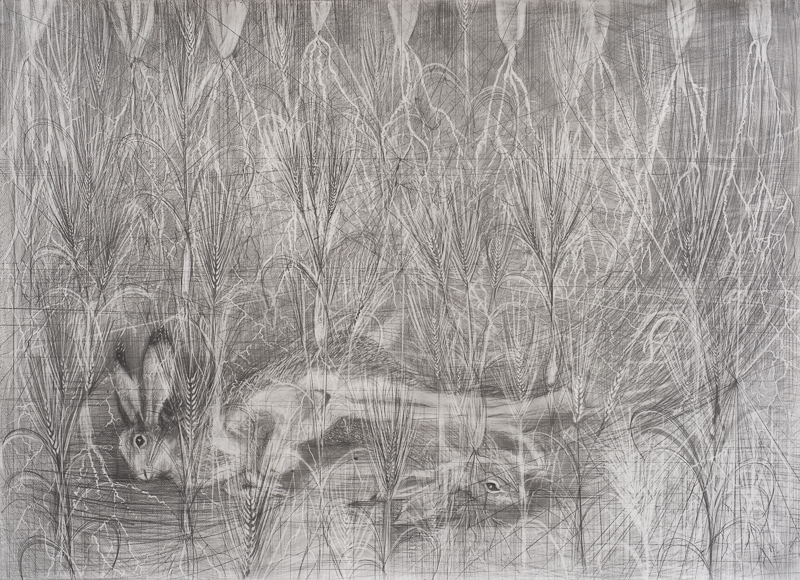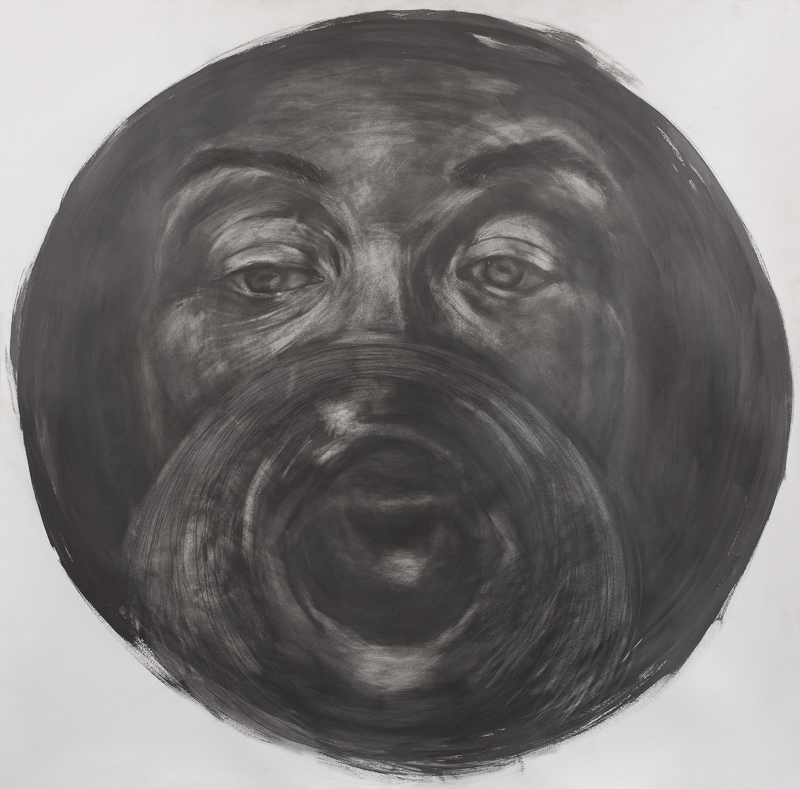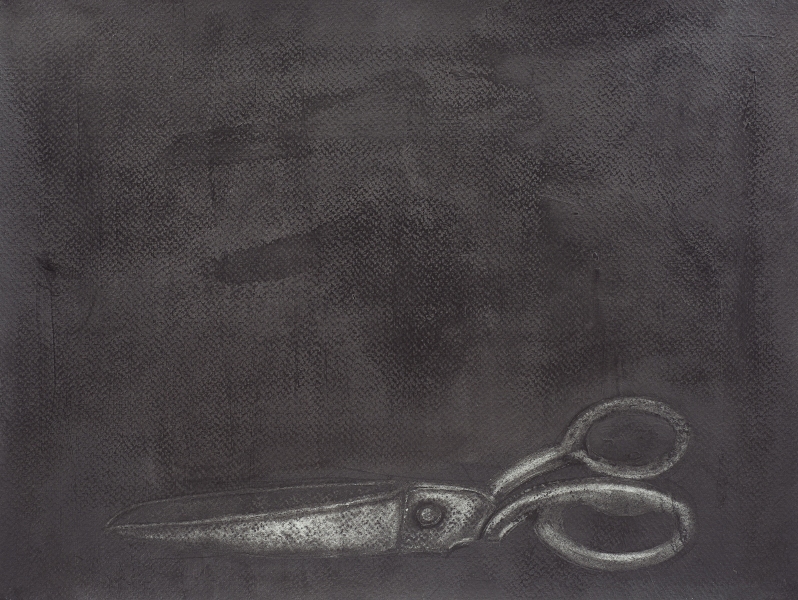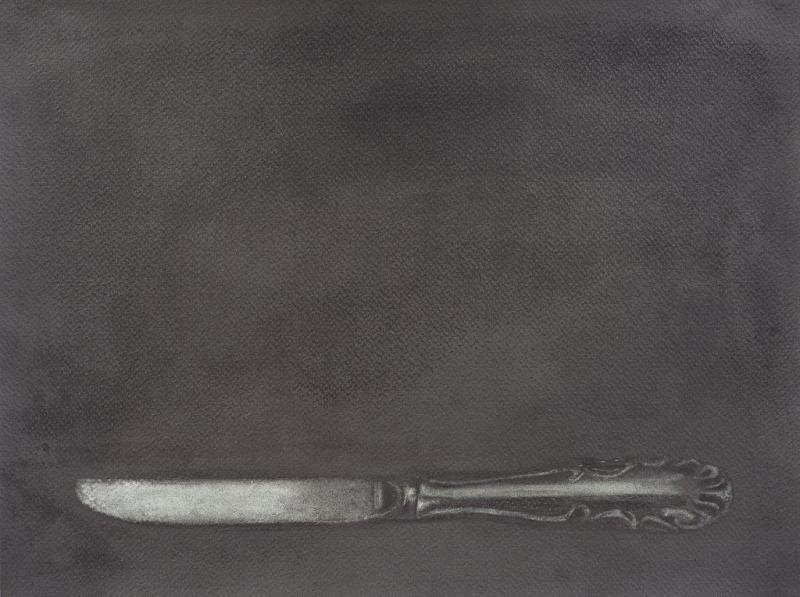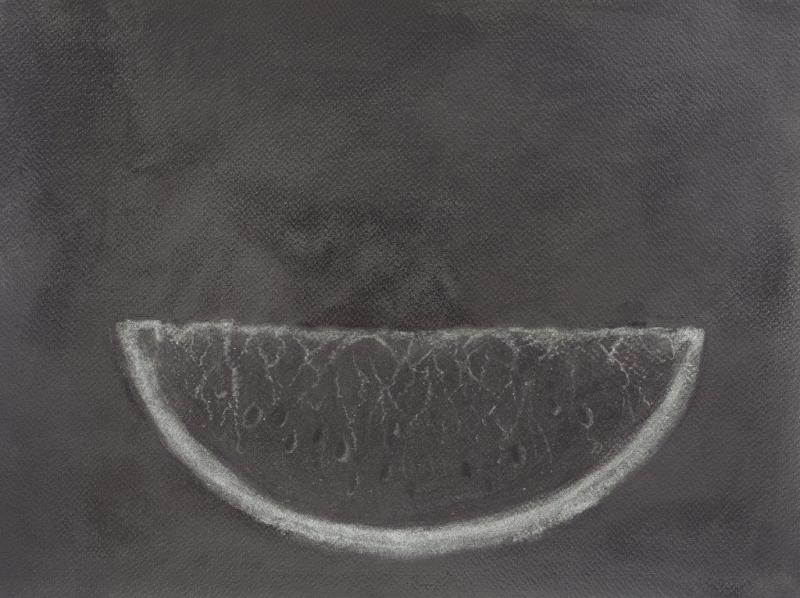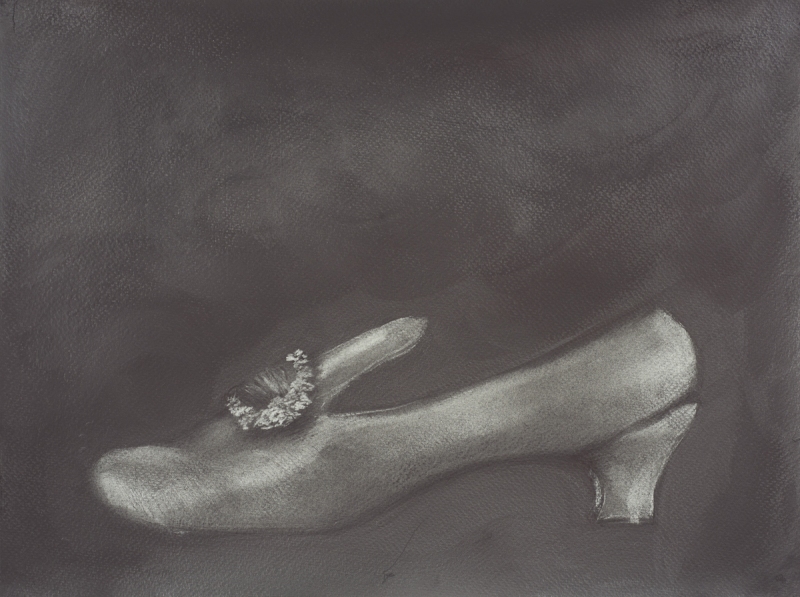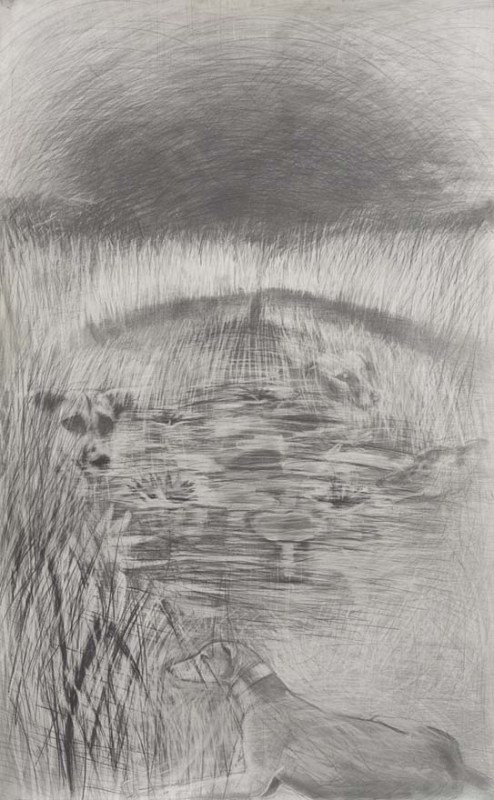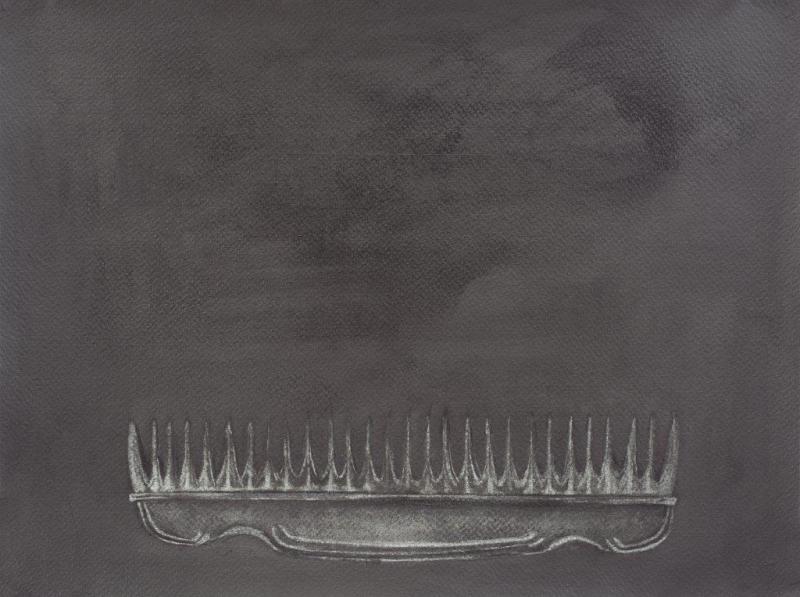Anat Smadar Maya: Between the Domesticated and the Wild
Anat Smadar Maya's (b. 1963, Kfar Vitkin , Israel ; lives in Kadima and works in Tel Aviv) exhibition “Binary Field” at Office in Tel Aviv Gallery features some 14 works, all in graphite on paper.
Smadar Maya works with graphite, charcoal, and pencils. She enjoys the feel of these colored chalks, which leave gray signs of time on the surface; she likes to draw in large, decisive gestures, to outline a circle within a circle in varying densities, thus conveying the appearance of circular movement toward a single vanishing point. The eye leads the gaze after the spiral lines, continually producing cyclical motion.
Between the house in the pastoral Kfar Vitkin and the studio in bustling Tel Aviv, a longing arises for open fields in blooming expanses shrouded in the smell of silage. The vast expanses of her childhood habitat will become a source of inspiration for her work of art, as she awakens her memories and presents them on large sheets of paper. In one scene etched in her memory, she sits on the fender of a huge tractor, taking in fresh sights of plowed red loam which emits a scent familiar only to farmers plowing their land before autumn. She will resume depicting the land in graphite on paper, and with the eraser create the magic, ex nihilo. The erasures, too, join the blots and circular lines, which enrich the painting with multiple shades of gray.
Despite the pastoral romance inspiring the place, dramas and unexpected encounters occur in the infinite space, underlain by loneliness, detachment, and fear. All of a sudden, the familiar field becomes alienated. The painting Dogs portrays an ostensibly na?ve landscape of a wheat field on a vertical format paper. A black cloudlet casting a rainbow-shaped shadow occupies the upper third of the painting, while in the lower plane, the work introduces not only a dog encounter, but also a confrontation between cultures: on the one hand a domesticated, well-groomed dog, lying calmly, with a leather collar on his delicate neck, like the white greyhound in Piero della Francesca's fresco depicting Sigismondo Pandolfo Malatesta Kneeling before Saint Sigismund (ca. 1451), which symbolizes European Renaissance culture and the dog's being an integral part of its owner's property, much like the servants. On the other hand, stray dogs roaming in the fields like wild beasts with ears pricked up, inspired by the artist's memory of a journey in India , where the dogs are free; they belong to no one and threaten no one. The scene presents both types of dogs, which are separated by a chasm of contrary worldviews, side by side, without judgment. The confrontation between the domesticated and the savage is present not only in painting, but also in the reality of the 21st century, where “enlightened” governments resort to cruel violence against their opponents in suppressing demonstrations, for example.
Another cycle of paintings—small works, which are part of a larger series and will debut in the exhibition as framed paintings—depict objects and still life, such as an awl, scissors, a knife, a key, a comb, a shoe, and a black watermelon. All attest to an exploration of culture, like archeological finds indicating a period that has passed, pointing at the zeitgeist , providing a historical record of fashion and mindset that have since vanished.
The work process on both series of paintings was identical: painting, erasing, and creating something out of nothing. Initially, the paper is covered with graphite. In the next phase, the image is revealed through erasure. In most of the works, the image is depicted parallel to the lower part of the page, leaving the upper half (and sometimes even most of the painting area) with a black graphite texture.
Chief Curator: Rachel Sukman |
